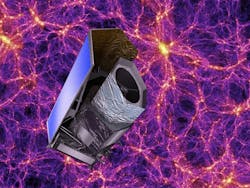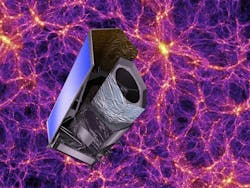Astrium wins ESA Euclid Payload Module contract
PARIS, 13 June 2013. Astrium, a European space technology company, won the Payload Module contract for the European Space Agency’s (ESA’s) future astronomy mission Euclid, due for launch in 2020.
Under the contract, Astrium will deliver an integrated module with a 1.2-meter-diameter silicon carbide (SiC) telescope and housing for the mission’s science instruments.
Euclid, the second medium-class mission in ESA’s Cosmic Vision program, will map the geometry of the dark universe to an unprecedented accuracy. The ultimate goal is to understand the origin of the universe’s accelerating expansion.
Euclid will collect deep and high resolution images of the sky by rotating the spacecraft once every 80 minutes. Within six years of observation, covering more than one third of the entire sky, Euclid will measure the shapes of, and distances to, more than 2 billion galaxies.
Euclid combines two methods for measuring geometry: weak gravitational lensing and galaxy clustering. Weak gravitational lensing is observed by measuring very precisely any distortion to the images of galaxies caused by invisible matter between them and the Earth. Using this and the distribution of galaxies in space and how that has evolved over cosmological time allows Euclid to help scientists take a step toward answering questions about the nature of dark energy and dark matter.
The key features of the Euclid Payload Module are:
- A lightweight Silicon Carbide (SiC) telescope with an excellent thermal stability and operating at 130K (-143° Celsius), making it invisible to near infrared wavelengths.
- A 1.2 meter diameter mirror permitting diffraction limited observation of galaxies as faint as magnitude 24.5.
- A three-mirror Korsch telescope design supplying light to its two scientific instruments, the Visible Imager (VIS), and the Near-Infrared Spectrophotometer (NISP).
- The VIS & NISP instruments are maintained in a very cold environment at 135K (-138° Celsius). The VIS & NISP instruments are developed by the Euclid Consortium and delivered to Astrium by ESA.

